A Quantum? Yes and no. At first glance, Iridium is simply a rack-sized Quantum synthesizer. With touch display, all the synthesis forms, all the modulation options (albeit slightly adapted). At second glance, Iridium is a densely packed 19-inch synth with an incredible 16-voices, with a new 4×4 rubber pad unit and – perhaps the very best – with various CV / Gate / analog clock connections.
No need to underline the high quality of the latest Waldorf instruments. In our test report Waldorf QUANTUM – a hybrid path to the future you can check out the many technical, tonal and haptic qualities built into that synthesizer flagship.
There are indeed countless test reports online (in print magazines / on Youtube). Quantum is in the meantime a mainstay in the studios of the world.
Decorated with those laurels, Waldorf has now produced a high-end device in rack format. With new things: 16 voices instead of 8 and a streamlined layout. These are definitely worth a closer look.
If you have the generous, noble and balanced design of the Quantum in mind, you may be bothered by the close-packed Iridium knobs. But in fact Waldorf earns our respect: reducing 100 centimeters of Quantum-width to less than half is a great achievement! And Iridium in 19-inch format has obviously meant compromises in terms of space.
If you accept the somewhat tight-fitting controls, the external power supply (12V), the simple stereo output, and – bad news – the loss of analog filters (Iridium has digital filters only), you will be rewarded with double the number of voices and some excellent additional modules, this all exceeding by far the potential of Quantum. Making Iridium the ultimate flexible rack synthesizer. A Waldorf, of course.
First among those additionals: The analog inputs / outputs (3.6mm), essential for the integration of Eurorack modules, for feeding external voltages into the Iridium modulation matrix, and for analog clocking (syncing) the arpeggiator / sequencer.
The analog jacks widely extend the possibilities of the Iridium – a huge plus point which, along with the 16-part polyphony, would also look extremely good on the Quantum.
The rubber pad field is another highlight. On it, notes / scales / chords / trigger values can be entered comfortably (= in the tried-and-tested 4×4 matrix manner). One more performance advantage of the Iridium over the excellent Quantum.
Quantum and Iridium in comparison:
QUANTUM on the credit side: Excellent layout (and corresponding ease of use when doing sound design), a generous amount of physical space, the unmatched noble look, the double set of stereo outputs (for a “true” bi-timbral sound architecture), and the analog filters.
IRIDIUM on the credit side: The double polyphony (16 voices), a compact design (for studios with little space), analog in/outputs and associated advantages for Iridium integration into a modular Eurorack environment, and, to top it all off, those 16 rubber pads (with their great potential).
One thing is certain: Waldorf is again at the highest level of synthesizer manufacturing. Even as relative newcomers, Quantum and Iridium are already milestones in synth history.
Congratulations and respect!
Waldorf Iridium
Polyphonic Rack Synthesizer
with Quasi-Quantum-Engine
16 Voices
Price:
approx. 2,200 Euros
(01/2021)
Link:
Waldorfmusic.com
Compare with:
Waldorf QUANTUM – a hybrid path to the future
Video / Sound Demo:

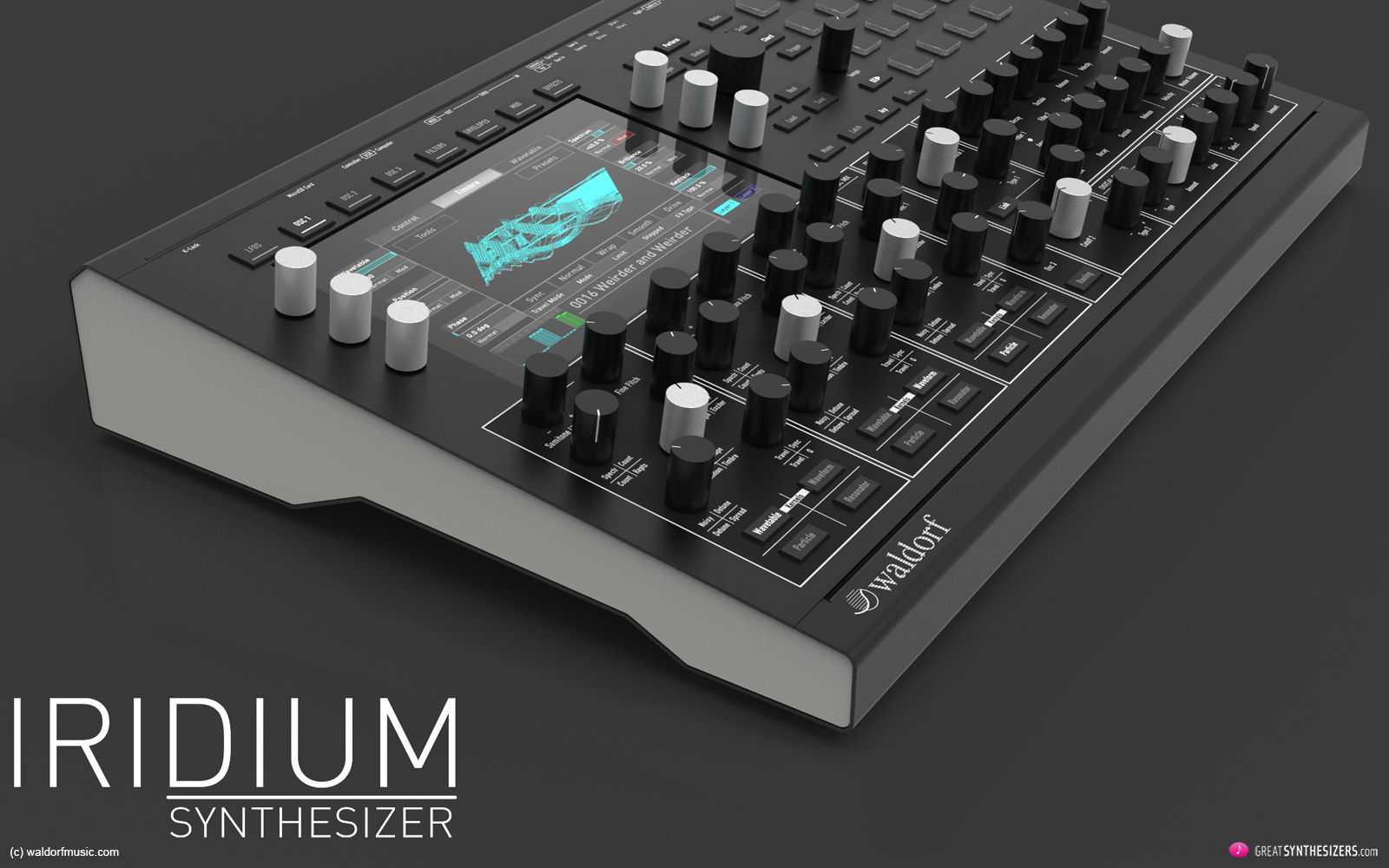

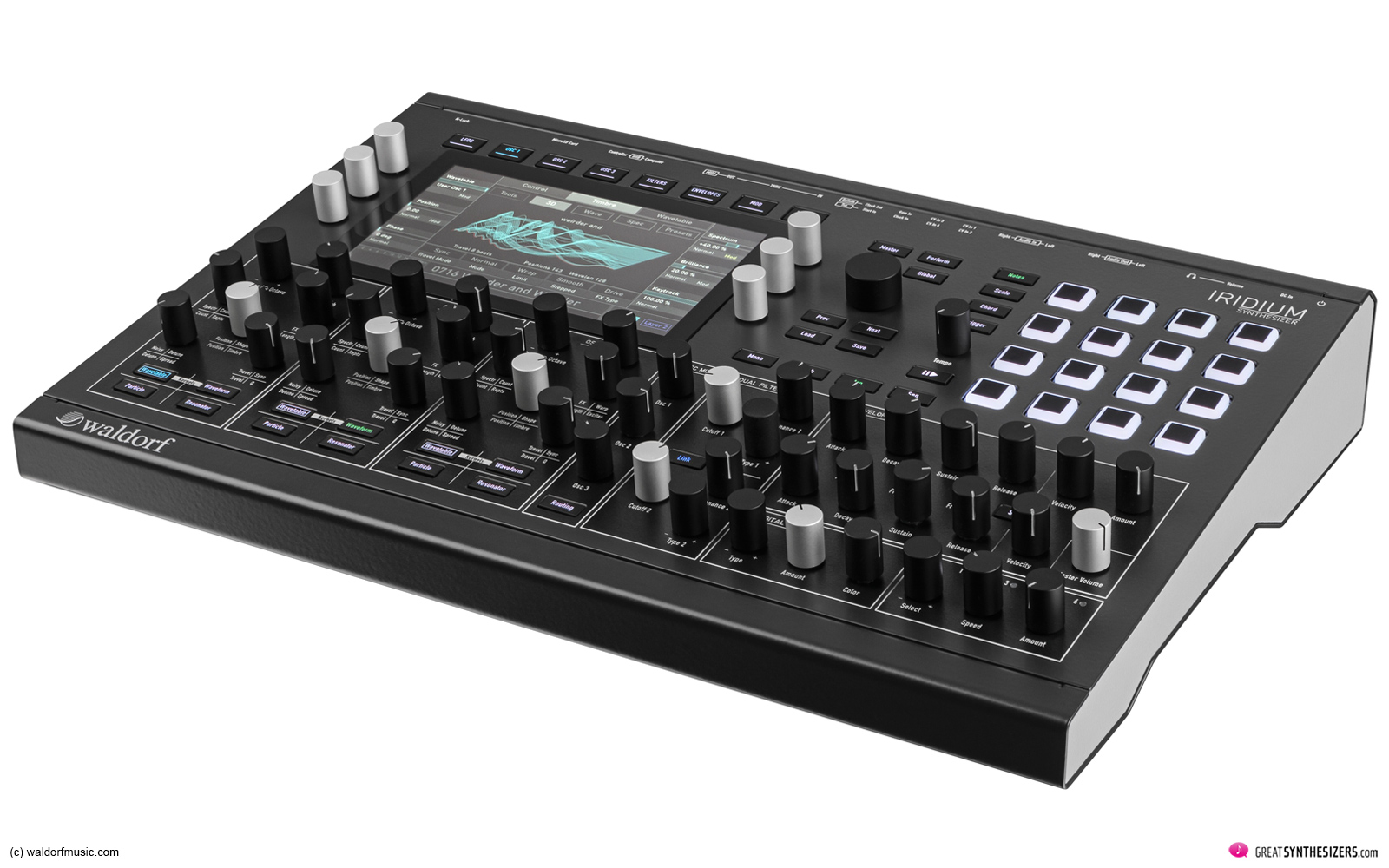
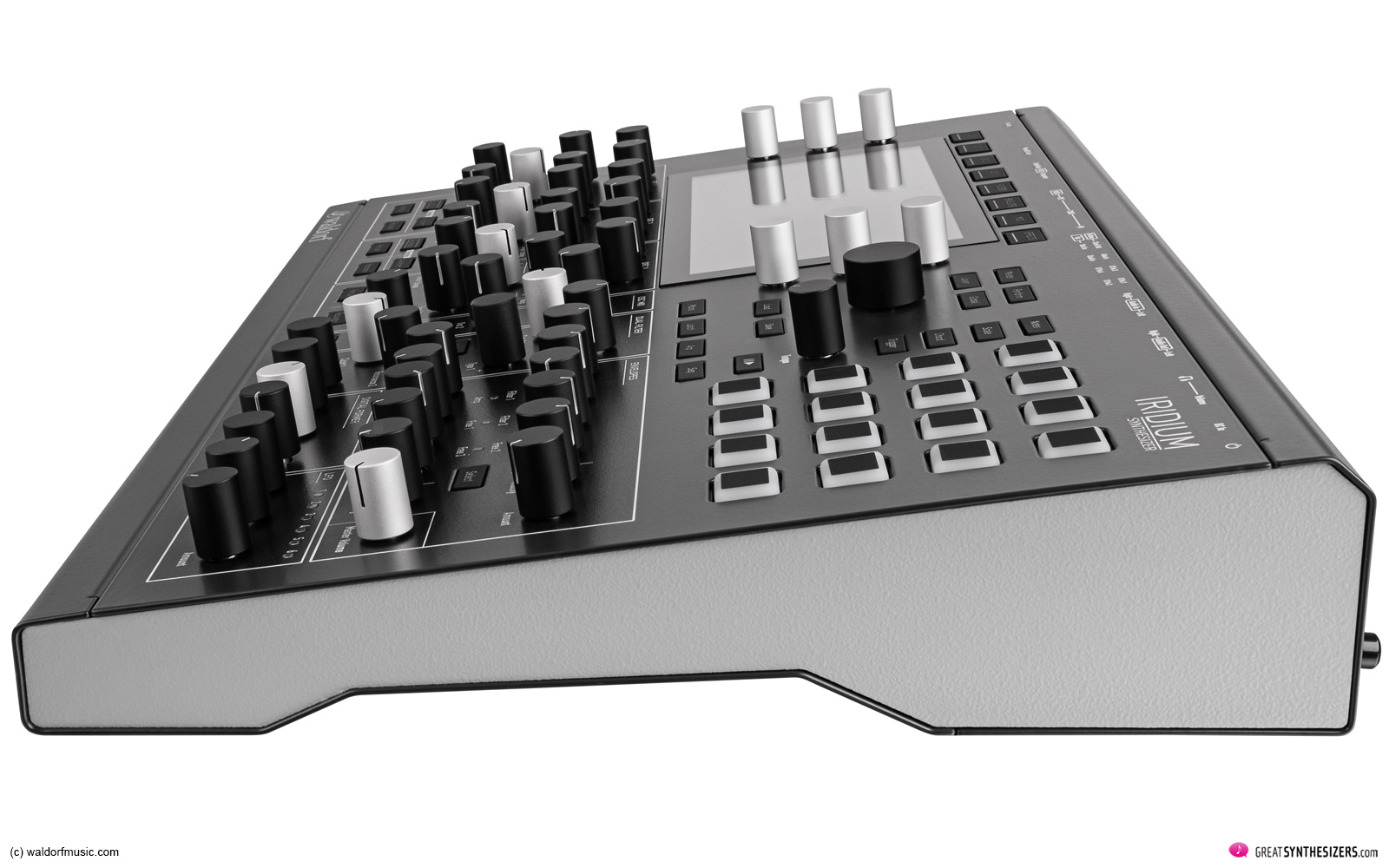

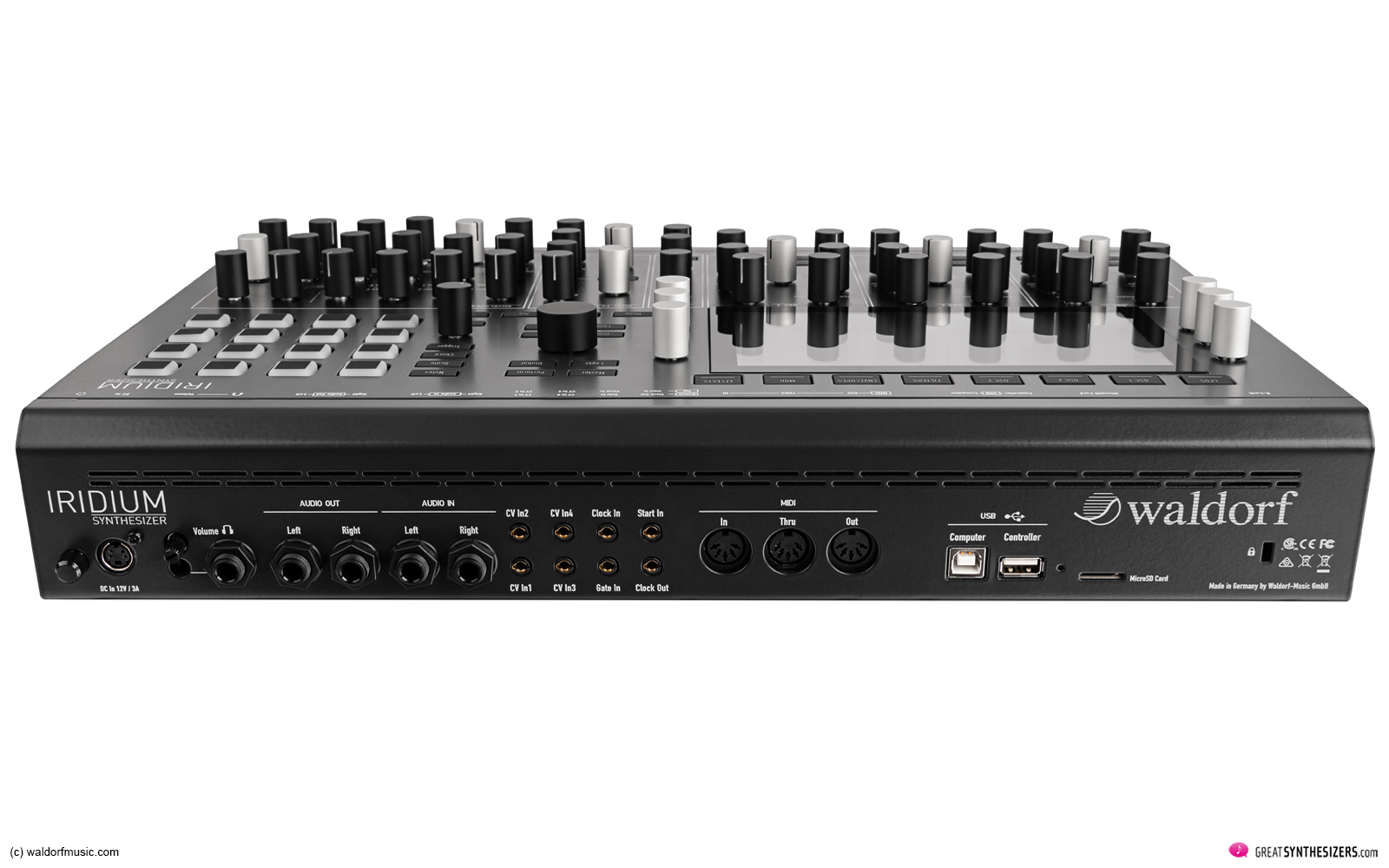
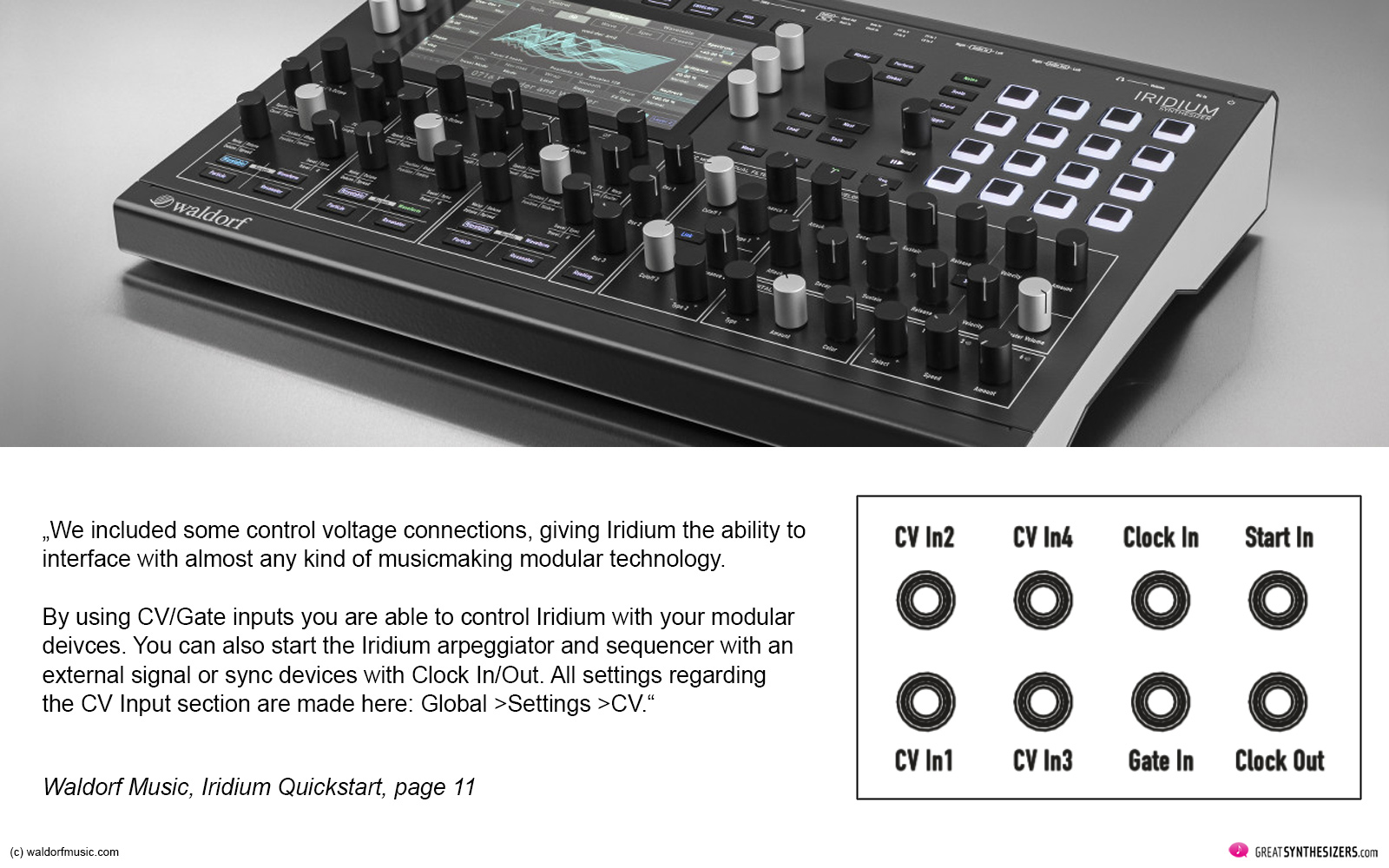
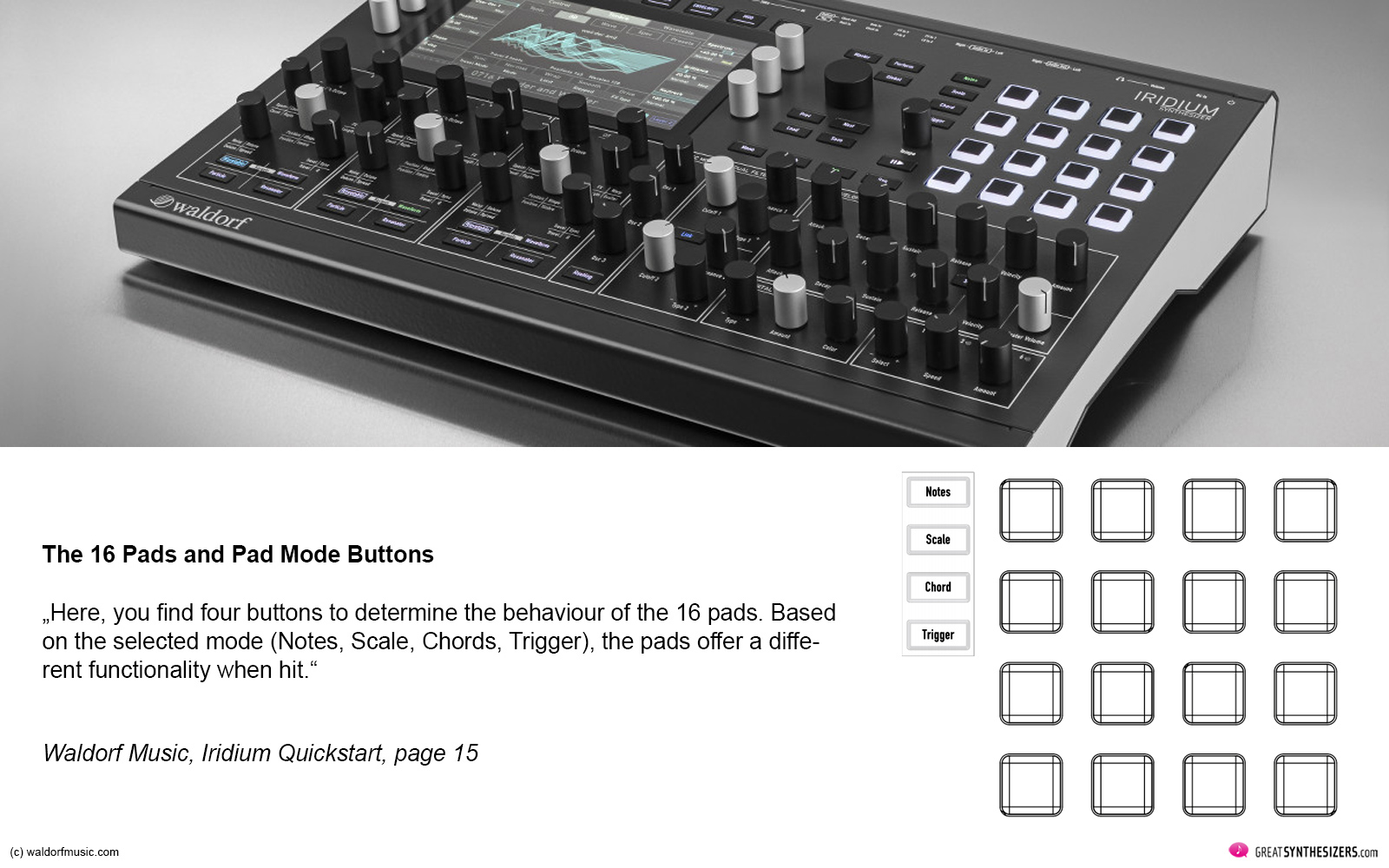
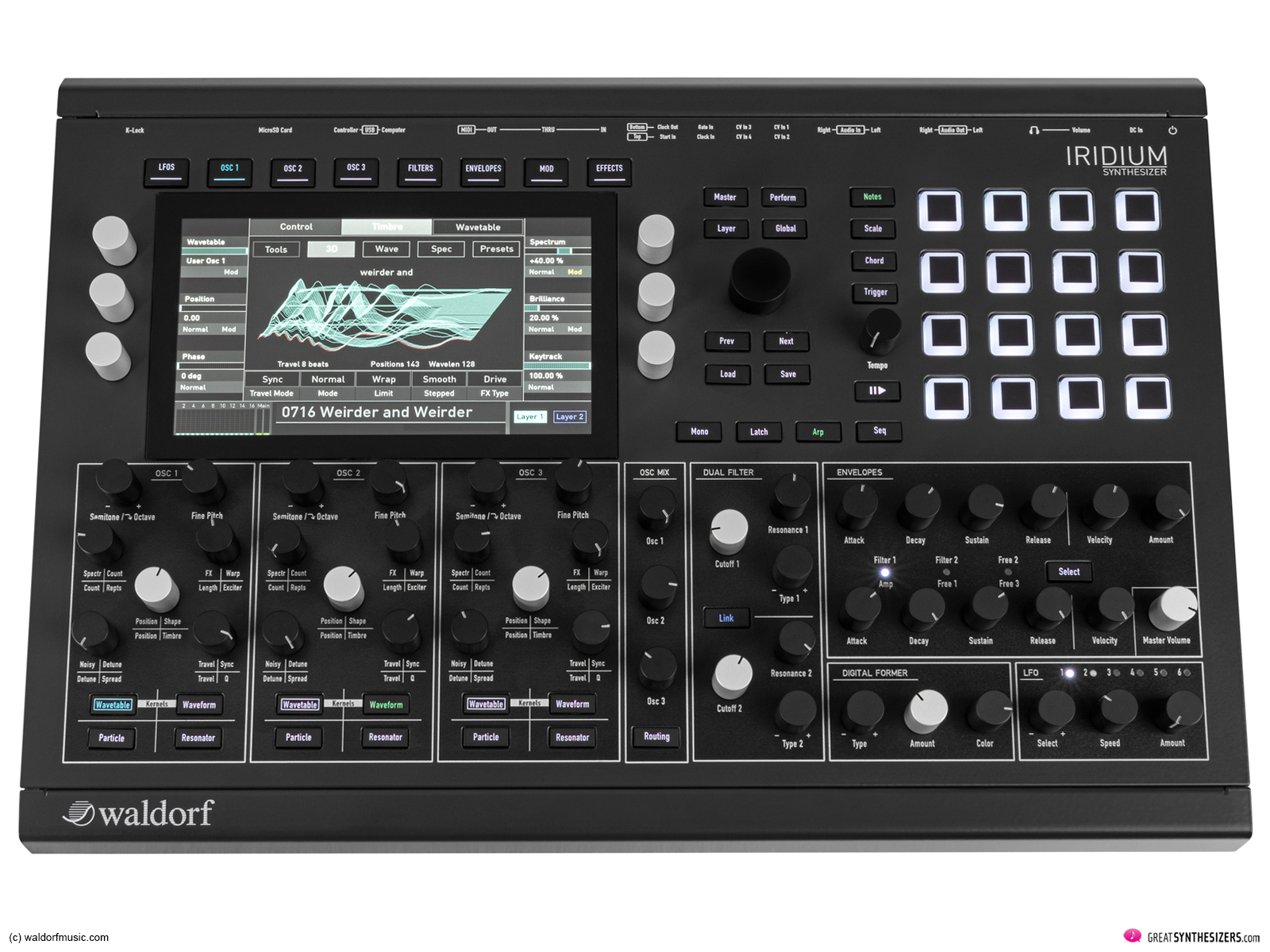
The Quantum has analog filters which the Iridium does not.
Indeed, and even if some comments are migated about Quantum analog filters, there are absolutely great, highly musical, very flexible .
… true? Thanks for the note … (shame I didn’t realize that insignifcant detail – sorry).
… absolutely …